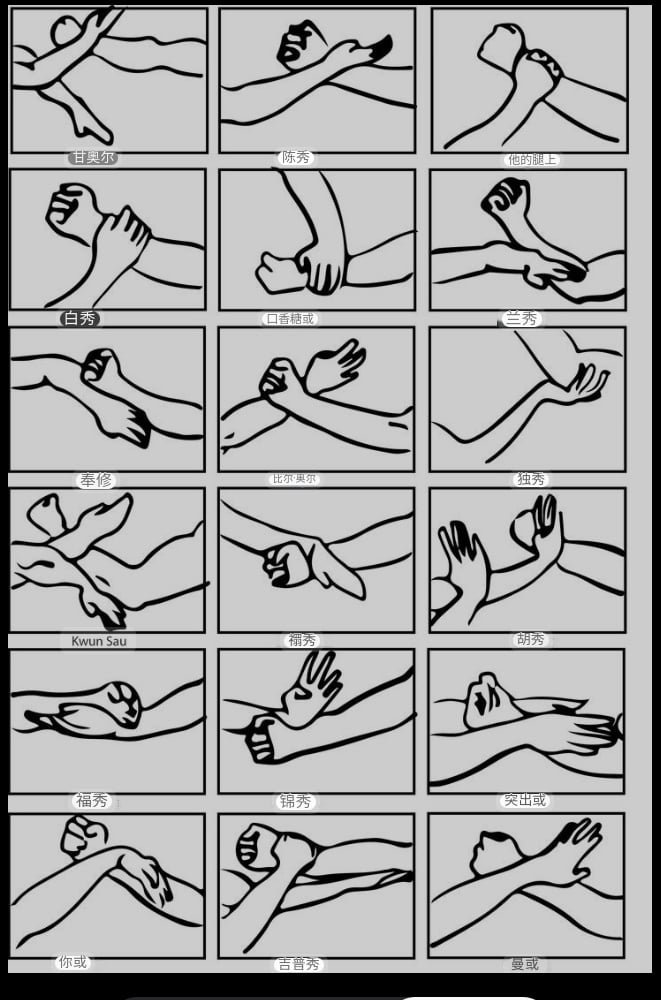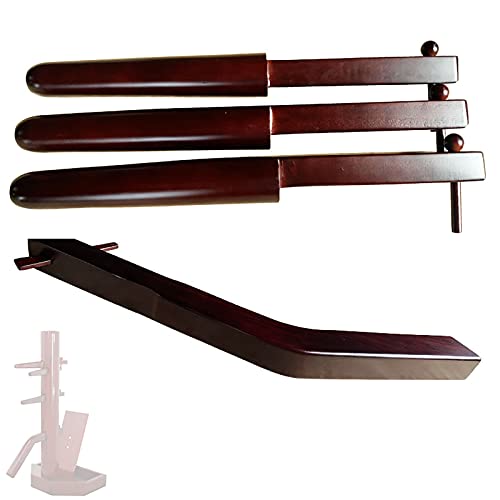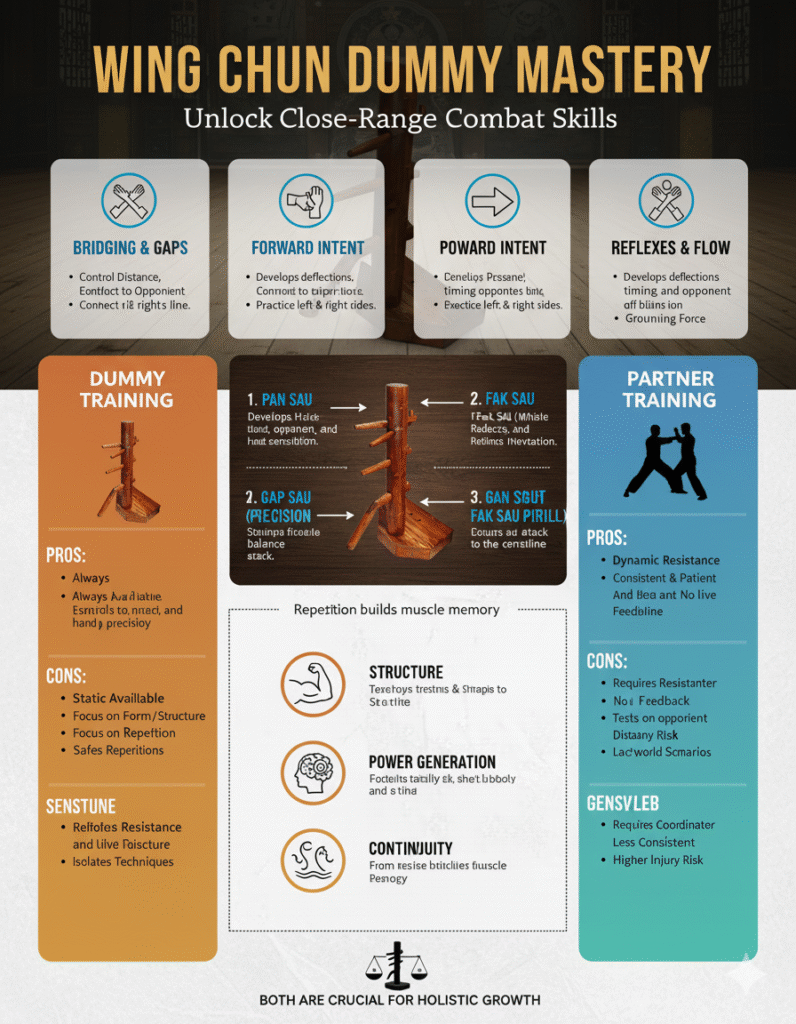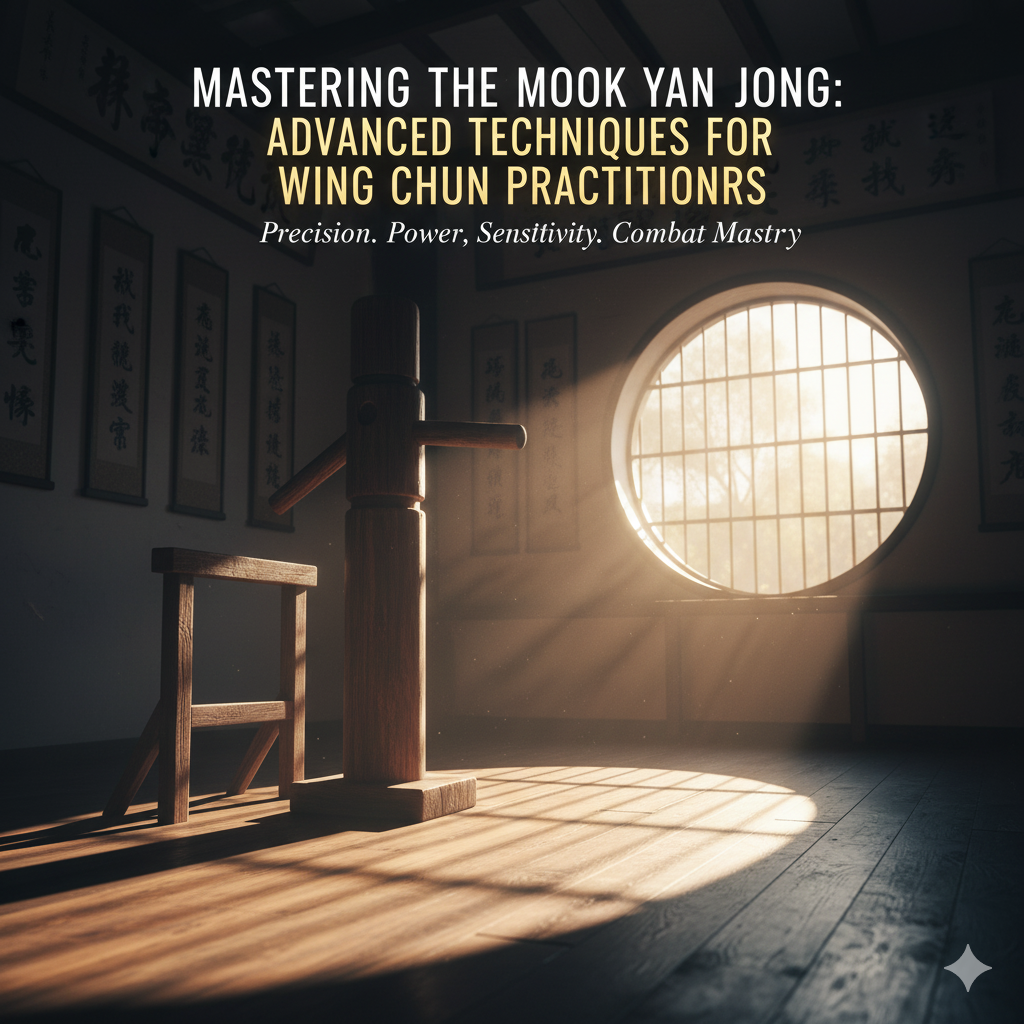The wooden practice dummy, often revered in the realm of martial arts.
It Holds a significant place in the training regimens of many disciplines, most notably Wing Chun.
This tool, steeped in tradition, offers practitioners a unique way to enhance their technique, strength, and precision.
The origins of the wooden dummy can be traced back centuries, Where it was utilized by martial artists to simulate an opponent.
Allowing you to practice strikes, blocks, and movements in a controlled environment.
Historically, the wooden dummy has been a staple in Chinese martial arts training.
It is believed to have been developed during the Ming Dynasty and has since become synonymous with Wing Chun, a Southern Chinese martial art.
However, its use is not confined to Wing Chun alone; various other martial arts.
Including Jeet Kune Do and certain forms of Karate, have integrated wooden dummy training into their practice to refine combat skills and improve overall physical conditioning.
Wooden dummies come in different types and are constructed from various materials.
The traditional Wing Chun dummy, known as the Muk Yan Jong, typically features three arms and a leg, allowing practitioners to engage in a wide range of techniques.
These dummies are often made from hard woods such as teak, oak, or rosewood, chosen for their durability and ability to withstand repeated strikes.
Some modern versions may incorporate synthetic materials to offer a more economical or weather-resistant option.
While still maintaining the essential characteristics needed for effective training.
The benefits of training with a wooden dummy are manifold.
Practitioners can develop better timing, distance management, and coordination.
The resistance provided by the dummy helps in building strength,
while the repetitive practice of techniques aids in muscle memory and precision.
Additionally, the dummy allows martial artists to practice with a level of intensity and focus that would bed difficult to achieve with a live partner,
Thus enhancing their overall combat readiness.
In essence, the wooden practice dummy serves as an invaluable tool in the martial artist’s arsenal.
bridging the gap between solo practice and real-world application, and fortifying the skills necessary for proficient self-defense and martial prowess.
Here we will discuss Mastering wooden dummy practice.
Setting Up Your Wooden Dummy
Setting up your wooden practice dummy is a crucial step that requires careful consideration to ensure both effective training and safety.
The first aspect to consider is the location.
Choose a space that is not only spacious but also free from potential hazards.
An open area in your home gym, garage, or even an outdoor space can serve as an ideal spot.
Ensure that there is ample room around the dummy to allow for unrestricted movement during practice.

Once you have selected the location, the next step is to secure the wooden dummy.
Stability is essential to prevent injuries and ensure that the dummy remains in place during vigorous training.
Most wooden dummies come with a sturdy base, but additional measures can be taken for enhanced stability.
Anchoring the base to the floor or using heavy-duty brackets can provide extra support.
If your dummy is wall-mounted, ensure that it is securely fastened to a solid structure, such as a concrete wall or a stud in a wooden wall.
Adjusting the height and angle of the wooden dummy is another critical factor tailored to your individual needs.
The dummy should be positioned so that the arms and leg are at appropriate levels relative to your own body.
Typically, the top arms should align with your chest or shoulder level, allowing for effective strikes and blocks.
Adjusting the angle can also simulate different opponent positions, offering a more comprehensive training experience.
Safety is paramount when setting up and using your wooden dummy.
Ensure that all components are securely fastened and regularly check for any signs of wear or damage.
Always warm up before beginning your practice to avoid muscle strain.
Using protective gear, such as gloves or wrist guards, can also minimize the risk of injury.
Following these guidelines will help create a safe and effective training environment.
Allowing you to make the most of your wooden practice dummy.
Basic Techniques and Movements
To Mastering wooden dummy practice.
It is a staple in martial arts training, offers an array of fundamental techniques and movements that significantly enhance a practitioner’s skill set.
To begin with, understanding the basic strikes is crucial. One of the most common strikes is the straight punch.
Where the practitioner should align their fist with their shoulder, ensuring a direct and powerful impact.
Another essential strike is the palm strike, which involves using the heel of the hand to deliver a forceful blow, ideal for close combat situations.
When it comes to blocking, the wooden dummy provides an excellent platform for practicing various blocking techniques.
The outside block, for example, requires the practitioner to sweep their arm outward from their centerline, effectively deflecting incoming attacks.
Similarly, the inside block involves moving the arm inward, protecting the torso and head from strikes.
These blocking techniques are paramount in developing quick reflexes and defensive capabilities.
Stances form the foundation of any martial art, and practicing them on the wooden dummy helps in refining balance and posture.
The horse stance, characterized by a wide and stable base, is fundamental for building lower body strength and stability.
Another key stance is the cat stance, where the weight is predominantly on the back leg, allowing for swift and agile movements.
Consistent practice of these stances on the wooden dummy ensures a solid foundation for more advanced techniques.
For beginners, it is advisable to start with slow, deliberate movements, focusing on form and accuracy.
Gradually, as confidence and muscle memory build, speed and power can be increased.

It is also beneficial to incorporate breathing techniques, ensuring that each movement is synchronized with breath, enhancing overall control and efficiency.
In essence, the wooden practice dummy serves as an invaluable tool in mastering the basic techniques and movements of martial arts.
By dedicating time to practice strikes, blocks, and stances, practitioners can significantly improve their form, posture.
And coordination, laying a strong foundation for advanced training.
Advanced Drills and Combinations
As practitioners progress in their training with the wooden practice dummy, the focus naturally shifts from basic techniques to more advanced drills and combinations.
These drills are designed to integrate multiple techniques into complex sequences.
Emphasizing the importance of flow and fluidity.
Mastery of these advanced combinations requires a keen sense of timing, rhythm, and accuracy, which are essential to effective martial arts practice.
One such advanced drill involves the combination of pak sao (slapping hand) and lop sao (grabbing hand) techniques.

This sequence begins with a pak sao to deflect an incoming strike, immediately followed by a lop sao to control the opponent’s arm, and concludes with a counter-strike.
The key to this drill is maintaining a seamless transition between movements, ensuring that each technique flows naturally into the next.
Another complex sequence is the integration of tan sao (palm-up block) and bong sao (wing arm).
This drill starts with a tan sao to intercept an attack, transitions into a bong sao to deflect a follow-up strike, and ends with a swift counter-attack.
Practitioners must focus on the fluidity of these transitions, ensuring that their movements are both efficient and effective.
Timing and rhythm are crucial elements in executing these advanced drills.
Practitioners should aim to synchronize their movements with the rhythm of the wooden dummy, creating a harmonious flow of techniques.
This can be achieved through consistent practice and attention to detail, gradually increasing the speed and complexity of the drills as proficiency improves.
Accuracy is another critical component in mastering advanced combinations.
Each technique must be executed with precision, targeting specific areas on the wooden dummy to simulate realistic combat scenarios.
Practitioners should focus on the accuracy of their strikes, ensuring that each movement is deliberate and controlled.
To help practitioners progress to higher levels of proficiency, it is essential to incorporate advanced drills into regular training routines.
For example, a training session might include a warm-up with basic techniques.
Followed by focused practice on individual advanced drills, and concluding with the integration of these drills into comprehensive combinations.
By consistently challenging themselves with more complex sequences.
Practitioners can continue to refine their skills and achieve mastery of the wooden practice dummy.
Conditioning and Strength Training
The wooden practice dummy is not only a valuable tool for refining martial arts techniques but also an effective apparatus for conditioning and strength training.
Integrating the dummy into your workout regimen can target various muscle groups, enhance endurance, and elevate overall physical fitness.

One of the primary benefits of using the wooden dummy is the ability to perform repetitive striking and blocking exercises.
It contribute significantly to building power and resilience.
For instance, performing repetitive strikes on the wooden dummy can help condition the arms, shoulders, and core.
The resistance provided by the wooden limbs necessitates forceful and precise movements.
Thereby engaging multiple muscle groups.
This type of training also improves muscular endurance, as the repeated impact and resistance train the muscles to sustain prolonged exertion.
Additionally, footwork drills around the dummy can enhance leg strength and agility, promoting better balance and coordination.
Blocking exercises on the wooden dummy are equally beneficial.

These drills not only develop upper body strength but also enhance reflexes and defensive capabilities.
The repetitive nature of these movements fosters muscle memory.
Enabling practitioners to execute techniques with greater speed and accuracy under pressure.
Furthermore, the tactile feedback from the wooden dummy helps in understanding the correct alignment and force application.
Which is crucial for effective martial arts practice.
However, it is essential to approach wooden dummy training with caution.
Overtraining or improper technique can lead to injuries.
Beginners should start with light.
Controlled movements and gradually increase intensity as their conditioning improves.
Regular breaks and proper warm-up routines are crucial to prevent strain and fatigue.
Wearing protective gear, such as wrist guards, can also mitigate the risk of injury.
Listening to your body and allowing adequate recovery time is vital to avoid overuse injuries and ensure sustainable progress.
Incorporating the wooden practice dummy into your conditioning and strength training routine can offer a myriad of benefits.
From enhanced physical fitness to improved martial arts proficiency.
With mindful practice and adherence to safety guidelines, practitioners can achieve significant gains in power, endurance, and resilience.
Mistakes : Mastering wooden dummy practice
Highly beneficial for martial artists, but it is not without its pitfalls.
One frequent mistake is improper posture.
Many practitioners tend to hunch their shoulders or lean excessively forward or backward.

To correct this, focus on maintaining a balanced stance with a straight spine, relaxed shoulders, and a stable base.
This not only prevents injury but also enhances the efficiency of movements.
Incorrect striking angles are another common issue.
Striking the dummy at improper angles can lead to ineffective training and potential harm.
To avoid this, ensure that your strikes are aligned with the intended targets on the dummy.
For example, when practicing punches, aim to strike with the knuckles and ensure your wrist remains straight to avoid strain.
Visualize the angles and adjust your position accordingly.
Frequently checking your form in a mirror if possible.
Lack of control is a significant concern as well.
Overzealous striking without control can damage the wooden dummy and result in personal injury.
Emphasize precision over power. Start with slow, deliberate movements.
Gradually increasing speed as control improves.
This practice not only refines technique but also builds muscle memory, allowing for more fluid and accurate movements over time.
Mindfulness is crucial in wooden dummy training.
Be constantly aware of your body mechanics and the feedback from each strike.
Regular self-assessment helps in identifying areas of improvement.
Video recordings of your sessions can be invaluable for this purpose.
Allowing you to observe and correct mistakes that may not be apparent during training.
In summary, mastering the wooden practice dummy requires attention to detail and a disciplined approach.
By correcting posture, ensuring accurate striking angles, and maintaining control, practitioners can significantly enhance their training outcomes.
Continuous self-assessment and mindfulness during practice are essential for ongoing improvement and mastery of this traditional martial arts tool.
Integration : Mastering wooden dummy practice
Wooden dummy training, a pivotal aspect of Wing Chun, can be seamlessly integrated with other martial arts practices and fitness routines to create a comprehensive and effective training regimen.
The skills honed through wooden dummy practice, such as precision, timing, and structural alignment.
It Provide significant benefits when applied to sparring, self-defense, and various martial arts forms.
For martial artists, incorporating wooden dummy training enhances performance by developing core principles that are universally applicable across different disciplines.
The dummy’s design encourages practitioners to focus on proper body mechanics and positioning, which is crucial during sparring sessions.
By refining techniques on the wooden dummy, martial artists can improve their responsiveness, accuracy, and power delivery, making them more effective in real-world self-defense scenarios.
Furthermore, the repetitive nature of wooden dummy drills helps to embed muscle memory, leading to quicker reaction times and more fluid movements.
This muscle memory is invaluable in dynamic sparring environments where quick, instinctive reactions often determine the outcome of an exchange.
Additionally, the structural integrity emphasized during wooden dummy practice translates into better balance and stability.
It reducing the risk of injury during high-intensity training.
To achieve a well-rounded training regimen, it is essential to balance wooden dummy training with other types of workouts.
For instance, combining wooden dummy drills with cardiovascular exercises.
Such as running or skipping rope, can enhance overall endurance and stamina.
Strength training activities, like weightlifting or bodyweight exercises.
It can complement the conditioning gained through wooden dummy practice, ensuring that practitioners develop both technique and physical prowess.
Incorporating flexibility and mobility workouts, such as yoga or dynamic stretching routines, can further augment the benefits of wooden dummy training.
These practices help to maintain joint health and muscular flexibility, which are vital for executing the precise movements required in martial arts.
By integrating wooden dummy training with a diverse array of fitness activities, martial artists can cultivate a holistic approach that maximizes their potential and prepares them for various combat and self-defense situations.
Maintaince for – Mastering wooden dummy practice
A well-maintained wooden practice dummy is essential for ensuring its longevity and effectiveness in training.
Regular upkeep not only preserves the wood and hardware but also ensures a safe training environment.
Proper maintenance involves a combination of cleaning, inspecting for damage, and performing routine maintenance.
By following these guidelines, you can keep your wooden dummy in excellent condition for years to come.
Firstly, cleaning your wooden dummy is crucial.
Dust and grime can accumulate over time, affecting the wood’s surface and overall performance.
Use a soft, damp cloth to wipe down the dummy regularly, ensuring you remove any dirt or debris.
Avoid using harsh chemicals or excessive water, as these can damage the wood.
Instead, opt for a mild soap solution if necessary, and dry the dummy thoroughly afterward.
Inspecting your wooden dummy for damage is another vital aspect of maintenance.
Regularly check for any cracks, splinters, or signs of wear and tear.
If you notice any minor damage, address it immediately to prevent further deterioration.
Sanding down rough edges and applying wood filler to cracks can help maintain the dummy’s integrity.
Routine maintenance also includes preserving the wood and hardware.
Applying a wood conditioner or oil can help protect the wood from drying out and cracking.
Choose a product suitable for the type of wood used in your dummy.
Additionally, check the hardware, such as screws and bolts, to ensure they are secure and not rusted.
Tighten or replace any loose or damaged hardware to maintain the dummy’s stability.
In some cases, professional repairs may be necessary.
If you encounter significant damage or structural issues that you cannot address yourself, seek the assistance of a professional.
They can provide expert repairs and advice on maintaining your wooden dummy.
Regular upkeep is essential for ensuring the safe and effective use of your wooden practice dummy.
By cleaning, inspecting for damage, and performing routine maintenance.
You can preserve the longevity and performance of your dummy, making it a reliable training partner for years to come.
Let us know about your thoughts on Mastering wooden dummy practice.







